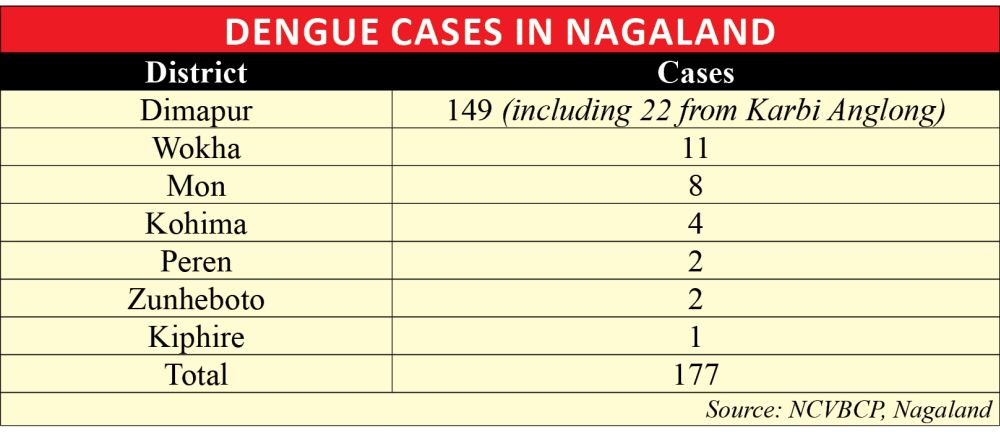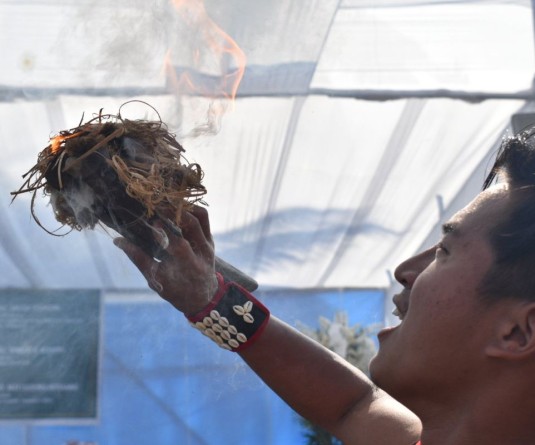
Dengue reported from 7 districts, majority of cases from Dimapur
Morung Express News
Dimapur | August 21
Along with an increased incidence of Dengue, Dimapur is reported to be witnessing an unprecedented spike in the frequency of blood transfusion of late. The increased blood transfusion is reportedly linked to the Dengue outbreak with demand for blood component, especially platelets, soaring to record highs in August, since the first cases were reported in June-July.
According to Health officials, the government-run blood bank attached to the Dimapur District Hospital, has been working extra time since the first cases were reported from in and around Dimapur. The officials disclosed that August has been particularly busy with atleast a 100 units being drawn/collected for transfusion per the day over the past 1-2 weeks.
In July alone, it registered over a 1000 units or transfusions as compared to the 700-800 units it handled prior to the Dengue outbreak.
A physician noted that Dengue outbreak often coincides with the monsoon in Dimapur and surrounding areas, including neighbouring Karbi Anglong district of Assam, with its presence being felt by late July or early August and peaking by mid-September. He said that incidence tapers as the monsoon retreats and autumn begins.
But this year, the first case was reported towards the end of June. As per the state branch of the National Center for Vector Borne Diseases Control (NCVBCP), the number of cases (confirmed by ELISA test) stood at 177 reported from 7 districts, as on August 19. (See table)
The state programme officer for the NCVBCP, Dr Niesakho Kire, informed that two-third of the total was reported from Dimapur. The figure for Dimapur also included 22 cases brought for treatment from neighbouring places Assam. To date, there has been no report of any Dengue fatality. In 2022, Nagaland reported 154 confirmed Dengue cases.
On control measures, Dr Kire said that fogging is being undertaken in places/localities with high incidence. He did not disclose the colonies with high incidence.
According to him, there is pressure from the public to increase the frequency of fogging. But he reminded that fogging alone would not contain an outbreak. “While it kills Dengue mosquitoes, it can also have collateral damage in the form of killing other beneficial insects like pollinators,” he said. It can also drive away infected Aedes Aegypti mosquitoes to other places and spreading the outbreak further.
Alongwith fogging, he maintained that a more practical solution would be controlling water collection at the household level. The Dengue mosquitoes prefer to breed in stagnant pools of water, unlike the Malaria causing ones. He strongly advised households observing atleast one “dry day” a week, which entails removing water from open containers, in and around the house, besides keeping water vessels well lid. He added, “Each and every individual has to play a role.”
The Aedes Aegypti is also known as a ‘day biter,’ especially active during the morning hours and evening.
While Dengue in Dimapur has been known to peak by mid-September, he added that depending on the monsoon rains, it may peak by the end of August too.
18 JE cases
In addition to Dengue, there have also been reports of Japanese Encephalitis, another mosquitoe-borne ailment. Dr Kire disclosed that the state NCVBCP has recorded 18 confirmed cases from 3 districts. Dimapur reported 13, which included 4 cases from Assam. Peren has reported 3 and Wokha 2 cases.




.jpg)

